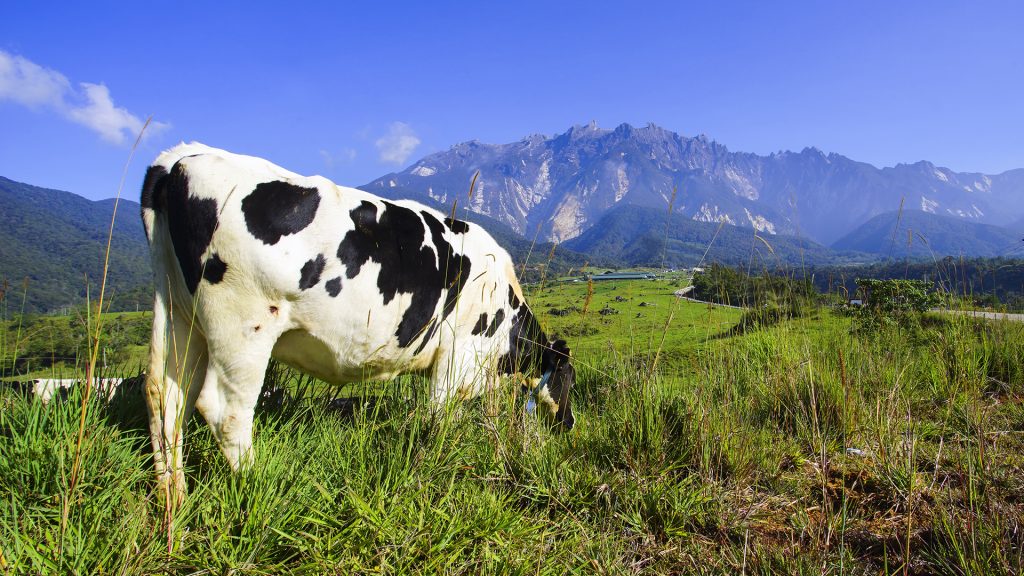New Zealand’s dairy agriculture industry is evolving through sustainable practices, technological advancements and addressing the challenges of climate change, while maintaining its reputation as the world’s largest dairy exporter.
New Zealand’s dairy agriculture industry exists as the basis for the agricultural economy and national identity. As the world’s largest exporter of dairy products, the country has developed a model that is uniquely adapted to the environment and is increasingly shaped by the demands of climate resilience, innovation and global market dynamics.
Landscapes defined by grass and climate
Dairy farming in New Zealand is closely linked to the country’s natural donations. The combination of fertile volcanic soils, mild temperate climates, particularly abundant rainfall in parts of the North and South Islands, has produced optimal conditions for year-round pasture-based agriculture. Compared to grain-fed dairy production models in countries such as the US and China, this grass-fed system offers comparative benefits of both animal welfare and milk quality.
Pasture-based systems produce milk with higher concentrations of beneficial fatty acids, including conjugated linoleic acid (CLA), and lower environmental inputs per milk produced.
The economic backbone of dairy products
The dairy sector is a key point in New Zealand’s economy, with dairy exports making up more than a quarter of total goods exports, with over $200 billion a year, or more than about 3-4% of GDP. Fonterra, the country’s largest dairy cooperative, processes and exports more than 80% of milk produced in more than 130 countries, particularly in Asia and the Middle East.
Dairy agriculture supports tens of thousands of jobs not only in farms, but also across the supply chain, from transportation and processing to logistics and agricultural technology development. Its economic importance is further amplified by its role in regional development. This is to maintain the rural economy and funding infrastructure through land use and production collection.
Climate change and sustainability pivot
However, New Zealand’s dependence on dairy products brings environmental scrutiny. The country’s high per capita greenhouse gas emissions from intestinal methane and nitrous oxide, primarily associated with livestock, are putting pressure on the industry to decarbonize.
In response, the sector is taking important steps towards environmental management. Initiatives such as his Waka Eke Noah partnership between government and agricultural sector groups aim to measure, manage and ultimately reduce emissions. Farmers are increasingly adopting strategies to mitigate nitrogen leaching, including river bank planting, spin-grazing and improving drainage management systems.
Agresearch and Dairynz’s research shows that when these practices are consistently applied, emissions can be reduced by up to 20% without compromising productivity.
Technological transformation on the farm
Technology is increasingly playing a central role in restructuring New Zealand’s dairy industry. Precision farming tools such as satellite-guided pasture mapping, real-time swarm monitoring, and automatic milking systems are widespread. These systems allow farmers to monitor cow health, track estrus cycles, and optimize milking schedules at levels of accuracy that were previously unachievable.
Additionally, platforms such as LIC’s Minda system allow genetic tracking and performance analysis, promoting the highly selective reproduction of properties such as fertility, milk yield, and disease resistance. Once a costly and complex process, genome testing is now integrated into herd management on thousands of farms.
Robotics and artificial intelligence are also beginning to shape their daily operations. From smart colours that monitor cow behavior to automated feeding and washing systems, dairy farms reduce labor strength while increasing animal welfare and operational efficiency.
Horizon: Innovation and the Future of Dairy Industry
Looking forward to it, there are some trends that define the next era of New Zealand dairy products.
The first is the integration of breeding in low-evacuation animals, with studies of methane-reducing genes showing strong promise. Early trials have shown that choosing low methane seed can reduce emissions by up to 10% across herds over consecutive generations.
The second is Bovaer, a synthetic compound that reduces the development of thought methane inhibitors and feed additives and the production of rumen stomach methane. These additives are currently in testing and may be commercialized within 10 years as regulatory approval is pending.
Third, alternative dairy products models, including plant-based milk, precision fermentation and cellular agriculture, have emerged as complementary forces. Although they will not immediately replace traditional dairy farming, they show diversification of protein production that New Zealand’s industry may accept or compete in the future.
Finally, sustainability indicators are becoming the central axis of the global dairy trade. As international buyers increasingly demand traceability, environmental assurance and welfare certification, New Zealand’s competitive advantage may lie not only in grass but also in transparency and reduced trackable climate impacts.
The Future of New Zealand’s Dairy Industry
New Zealand’s dairy industry has evolved from a colonial-era subsistence economy to a global agricultural powerhouse, uniquely shaped by a climate, geography and cooperative approach. The challenges loom in the form of climate obligations, international competition and consumer change, but the culture of innovation and resilience in the sector is well positioned for the future.
To maintain its legacy and reputation, the industry must not only optimise production, but also redefine what sustainable, intellectual and ethical dairy farming looks like on a warming planet.
reference
Burggraaf, V., et al. (2015). The results of grass-based milk production and quality in the New Zealand system. NZ Journal of Agricultural Research. Dairynz. (2022). Climate Change and Emission Reduction Strategy Report. www.dairynz.co.nz Pinares-Patiño, C., et al. (2020). Methane excretion and genetics in antiminant reproduction. Agresearch & nzagrc. Fonterra Cooperative Group. (2023). Annual sustainability and financial reports. www.fonterra.com lic. (2024). Minda Software Overview and Genetics Platform.
www.lic.co.nz
Source link

